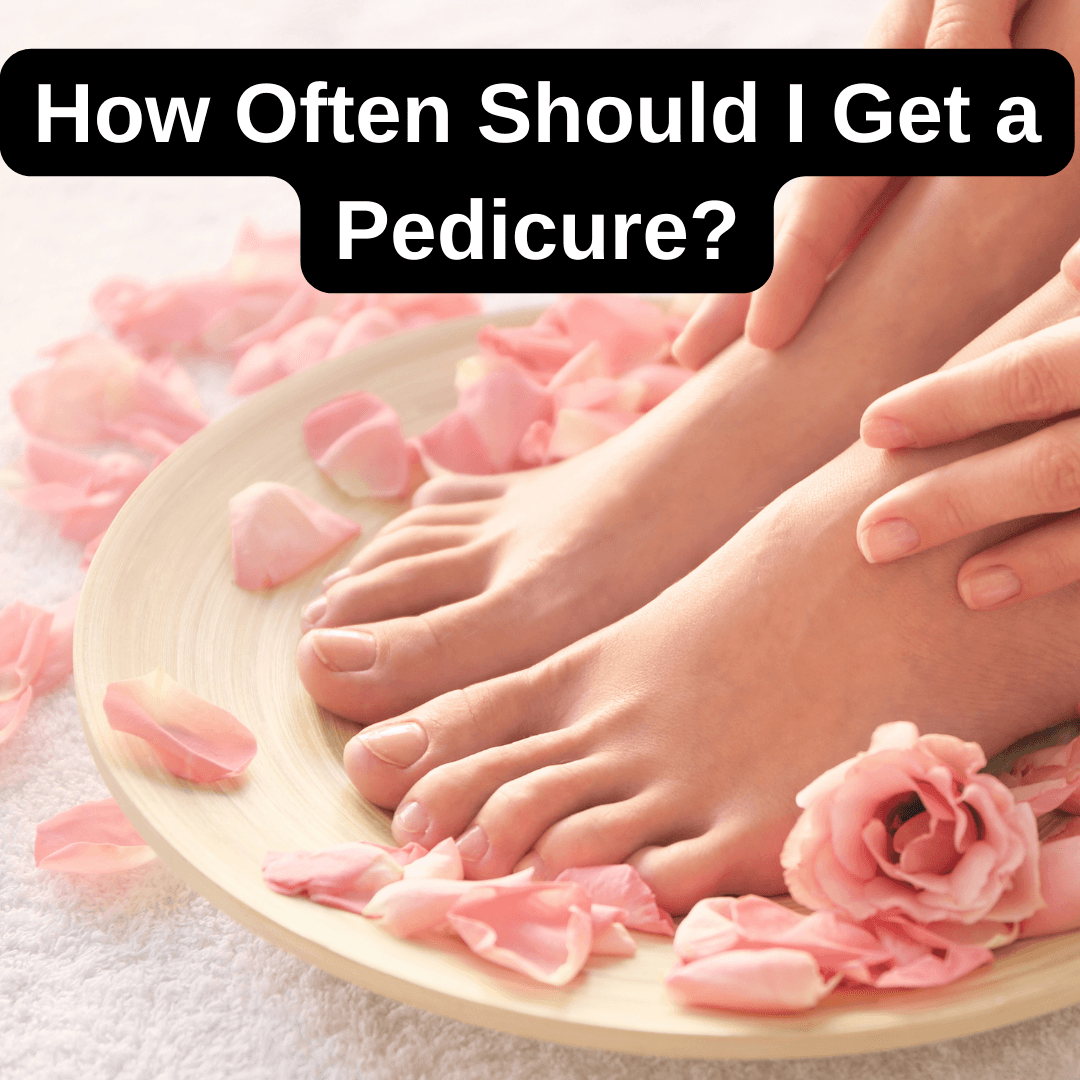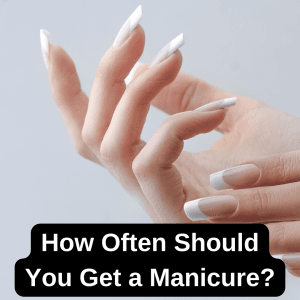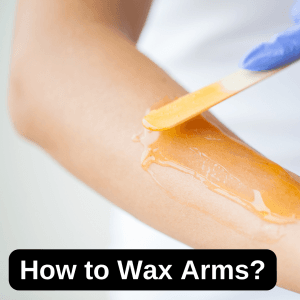Foot Health, Timing & Expert Care Guide for Women
How often should you get a pedicure? It depends on your lifestyle, foot condition, and beauty goals. But one thing is clear: neglecting your feet too long can lead to dryness, cracked heels, and even infections. This comprehensive guide will show you when to book your next pedi, how to extend results, and answer the internet’s most-searched questions—all in one place.
Discovering the Right Pedicure Routine
Establishing the perfect pedicure routine isn’t about following a one-size-fits-all rule—it’s about understanding your feet’s specific needs. From daily walking habits to seasonal skin changes, several factors influence how often you should pamper your feet. A well-planned pedicure schedule not only keeps your toes looking polished but also prevents common issues like calluses, cracked heels, and nail damage.
The key is balance: too frequent pedicures can lead to skin sensitivity, while waiting too long may result in painful buildup or neglected nail care. Whether you’re managing dry winter feet or prepping for sandal season, your ideal routine will reflect your lifestyle, footwear, and personal comfort preferences.
In this section, we’ll help you identify your foot type, recognize the signs your feet need extra attention, and customize a schedule that supports both aesthetic goals and long-term foot health. Your perfect pedicure routine starts here.
Recommended Pedicure Frequency
| Lifestyle / Condition | Ideal Frequency | Notes |
| Average self-care routine | Every 4 weeks | Allows skin and nail regrowth, prevents over-exfoliation |
| Open-toe shoes wearer / active lifestyle | Every 2–3 weeks | Prevents buildup of dirt, calluses, and polish damage |
| Heavy calluses or cracked heels | Every 2 weeks | Promotes consistent skin renewal and softness |
| Polish change only (no exfoliation) | Weekly if desired | Safe as long as skin isn’t over-exfoliated |
If you want smooth, healthy feet without overdoing it, follow this expert-recommended schedule: every 4 weeks for regular maintenance, every 2–3 weeks if you’re on your feet often or wear sandals, and weekly only if you’re just changing polish without scrubbing. This balanced routine keeps your nails neat, prevents buildup of dead skin, and helps avoid problems like cracked heels or ingrown toenails.
Matching your pedicure frequency to your lifestyle ensures you get the benefits—like improved foot hygiene and longer-lasting polish—without risking skin irritation or nail thinning from over-exfoliation. Not all feet need the same care, and this chart is designed to help you personalize your schedule without guessing.
By staying consistent but not excessive, your feet stay soft, clean, and salon-fresh all year round.
Signs It’s Time for a Pedicure (and What Happens If You Wait Too Long)
How do you know when it’s time for a pedicure? It’s not just about chipped polish or prepping for sandal season—your feet give off clear warning signs when they’re overdue for care. Ignoring these signs can lead to more than cosmetic issues; it can affect your comfort, hygiene, and even mobility.
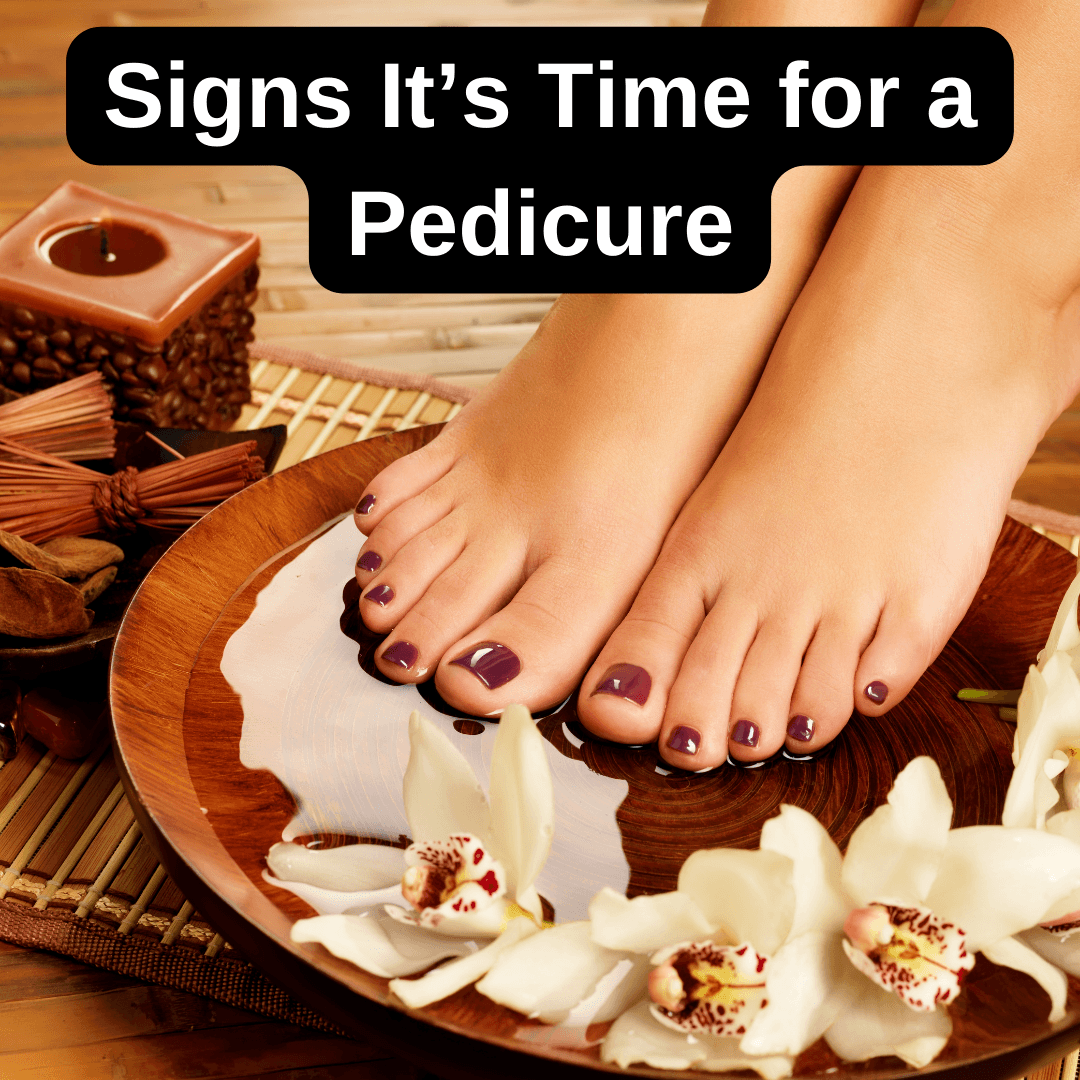
Here are 5 clear signs you need a pedicure:
- Chipped or faded polish: Beyond appearance, old polish can harbor bacteria, especially if left on for weeks.
- Overgrown or broken toenails: Long or jagged nails can press against shoes, causing pain, breakage, or fungal buildup.
- Cracked heels or corns: These are signs of dead skin accumulation. Left untreated, they may worsen into painful fissures or bleeding.
- Ingrown toenails or pain: Redness, tenderness, or pressure near the nail edge requires professional care to prevent infection.
- Dry, rough, or overgrown cuticles: Cracked cuticles can lead to infections and cause polish to lift prematurely.
But what happens if you keep skipping pedicures?
Over time, neglecting routine care may result in:
- Hardened skin and painful calluses
- Fungal infections under overgrown nails
- Persistent foot odor from trapped bacteria
- Deep skin cracks or corns that require medical attention
Getting a regular pedicure helps you stay ahead of these problems—not just for beauty, but for your overall foot health. If even one of these signs sounds familiar, it’s your cue: don’t delay the care your feet deserve.
How Pedicures Help Maintain Foot Health
Pedicures go beyond aesthetics. According to the CDC, foot hygiene plays a major role in preventing fungal infections and maintaining skin integrity (CDC Foot Hygiene Guide).
Key Benefits of Regular Pedicures:
- Prevents ingrown toenails and infections
- Removes dead skin, reducing cracks and pain
- Boosts circulation via massage
- Enhances confidence and self-image
- Reduces need for medical interventions
What Happens If You Get Pedicures Too Often?
Over-exfoliation can irritate your skin and make it prone to microtears and sensitivity. That’s why most experts—including dermatologists—recommend spacing exfoliating pedicures to no more than once a month unless advised otherwise.
How to Make Your Pedicure Last Longer
| Method | How It Helps |
| Apply cuticle oil daily | Keeps nail bed moisturized and prevents cracking |
| Exfoliate feet weekly | Removes dead skin, extends smoothness |
| Use top coat every 5 days | Prevents chipping and polish fading |
| Wear socks at night | Locks in moisture and prevents dryness |
Want your pedicure to last longer without chipping or fading?
With just a few simple habits at home, you can easily extend the life of your pedicure by days or even weeks. Whether you’ve chosen classic polish, gel, or BIAB, these expert-approved tips help preserve smooth skin, glossy color, and overall foot health.
Here’s how each method boosts your pedicure’s longevity:
- Apply cuticle oil daily: Hydrated cuticles prevent polish from lifting and reduce the risk of painful hangnails. Regular oil application strengthens the nail bed and keeps the skin around your nails soft and healthy.
- Exfoliate feet weekly: Gentle exfoliation removes dead skin buildup, which not only keeps feet looking fresh but also prevents cracking—especially on the heels and soles.
- Use a top coat every 5 days: A clear top coat acts like a shield against chips and scratches. Reapplying it regularly refreshes shine and extends the polish’s lifespan.
- Wear socks at night: Cotton socks trap moisture and help foot creams work overnight. This prevents dryness and keeps your feet soft between pedicures.
If you’re investing in salon treatments, protecting them with proper at-home care ensures your feet look flawless longer—without extra appointments or touch-ups.
Use foot cream with urea for cracked heels. Urea deeply hydrates thick foot skin and reduces hard buildup (PMC Clinical Review).
For a longer-lasting finish, choosing the right number of polish layers matters just as much as your aftercare routine. Learn how many coats of nail polish you really need for the perfect coverage.
Should You Take Breaks from Pedicures?
Yes, especially from constant polish wear. Leaving nail polish on too long (especially gel or dark colors) can lead to keratin granulations, which show up as white patches on your nails. Let your nails breathe between color changes or choose non-acetone removers and nourishing nail care routines.
Should You Get a Pedicure in Winter?
Absolutely. While summer is peak pedicure season, winter is when your feet dry out and risk hangnail infections or fungal growth due to trapped moisture in boots. Keep them clean, exfoliated, and moisturized year-round.
Expert-Backed Foot Care Tips Between Pedicures
- Wash feet daily, especially between toes
- Dry thoroughly after showers
- Use antifungal foot powder if you sweat excessively
- Avoid tight, non-breathable shoes
- Change socks daily
These habits aren’t just cosmetic—they help prevent odor, nail fungus, and calluses.
While maintaining soft feet is essential, facial grooming is just as important—especially if you’re tackling stubborn hair. Here’s a practical, pain-free guide to removing a unibrow without irritation.
Should You Soak Your Feet Before a Pedicure?
Soaking can soften dead skin and make the pedicure more comfortable—but some experts now recommend dry pedicures for hygiene and polish longevity. In dry pedicures, there’s less risk of fungal transmission and polish adheres better.
Frequently Asked Questions
What is the healthiest pedicure to get?
The healthiest pedicure is one that prioritizes hygiene and nail preservation. A dry pedicure with:
- Non-acetone products
- Urea-based moisturizers
- Minimal cuticle cutting
- BIAB or breathable polish …is considered healthiest. Avoid over-exfoliation and always choose salons with sterilized tools.
What happens if you don’t dry between your toes?
Failing to dry between your toes creates a moist environment, which is ideal for fungal growth. This can lead to:
- Athlete’s foot
- Toenail fungus
- Skin breakdown and odor
Always pat-dry thoroughly after showers, especially before putting on socks or shoes.
What type of pedicure lasts the longest?
Gel pedicures typically last the longest—up to 4 weeks without chipping. However, they require proper removal to avoid nail damage.
Longevity comparison:
| Pedicure Type | Avg. Duration |
| Classic Polish | 7–10 days |
| Gel Pedicure | 2–4 weeks |
| BIAB Overlay | 3–4 weeks |
How often should you remove dead skin from your feet?
Dead skin should be gently exfoliated once a week. Over-exfoliation can damage healthy layers and cause irritation. Use:
- Pumice stone
- Urea foot cream
- Soft foot scrub
Avoid metal razors unless done by a professional.
What is a luxury pedicure?
A luxury pedicure includes everything from a standard pedicure plus:
- Extended massage
- Hot stone therapy
- Paraffin wax treatments
- Aromatherapy
- Premium polishes or BIAB
It’s designed for both aesthetic and deep relaxation.
Why do they call it a pedicure?
The word “pedicure” comes from the Latin words pes (foot) and cura (care), meaning “foot care.” It refers to cosmetic and hygienic treatment of the feet and toenails.
What is pedicure etiquette?
Proper pedicure etiquette includes:
- Arriving with clean feet
- Not shaving legs the day of
- Being polite to your technician
- Not using speakerphone
- Tipping appropriately (15–20%) Good etiquette ensures a pleasant experience for everyone.
Does pedicure remove tan from feet?
Yes, pedicures can remove superficial tan from the feet through exfoliation and scrubbing. However, deeper pigmentation requires skin-lightening creams or professional treatments. Don’t expect full tan removal in one session.
How often do pedicures prevent ingrown toenails?
Routine pedicures every 3–4 weeks help prevent ingrown toenails by ensuring proper nail shaping and cuticle care. But improper cutting (rounded edges) can actually cause ingrown nails—make sure your technician knows to cut straight across.
Is pedicure good for cracked heels?
Yes, pedicures are beneficial for cracked heels when combined with proper aftercare. They remove hardened skin, hydrate with creams, and prevent further cracking. For severe cases, medical foot creams with urea or lactic acid are recommended.
Should feet be soaked before pedicure?
Soaking feet softens skin and cuticles, making it easier to exfoliate. However, many professionals now prefer dry pedicures to reduce infection risk and improve polish adhesion. Both are effective—choose based on your salon’s hygiene standards.
Why does my toenail hurt when I press on it?
Pain when pressing on a toenail may be due to:
- Mild ingrown nail
- Pressure from tight shoes
- Bruising under the nail
- Fungal infection
If pain persists or worsens, consult a podiatrist to rule out serious conditions.
How often is too often to get a pedicure?
Getting a full exfoliating pedicure more than once a week is considered too frequent and may:
- Over-strip your skin’s protective barrier
- Cause irritation or microtears
- Increase sensitivity and inflammation
Ideal routine:
- Exfoliating pedicure: once every 2–4 weeks
- Polish-only change: up to once a week (if no scrubbing is done)
Listen to your skin and space treatments for maximum benefit.
Just as understanding how often to get a pedicure contributes to maintaining healthy feet, aligning your manicure schedule with your nail’s growth cycle ensures flawless nails year-round.
Are French pedicures outdated?
No, French pedicures remain timeless and versatile. While trends evolve, the French style continues to be a favorite because of its:
- Clean white tips
- Natural pink base
- Sophisticated, low-maintenance look
In fact, variations like reverse French and colored French tips are trending adaptations in 2025.
Should I wash my feet after a pedicure?
Yes, it’s a good practice to gently rinse your feet after a pedicure, especially if:
- You had exfoliating treatments
- Lotions or oils were applied
- You’re about to wear socks or closed shoes
Be sure to dry thoroughly, especially between the toes, to prevent fungal infections or moisture buildup.
Is it good to get pedicures regularly?
Absolutely. Regular pedicures support:
- Nail health
- Smooth, soft skin
- Early detection of issues like corns or fungal infections
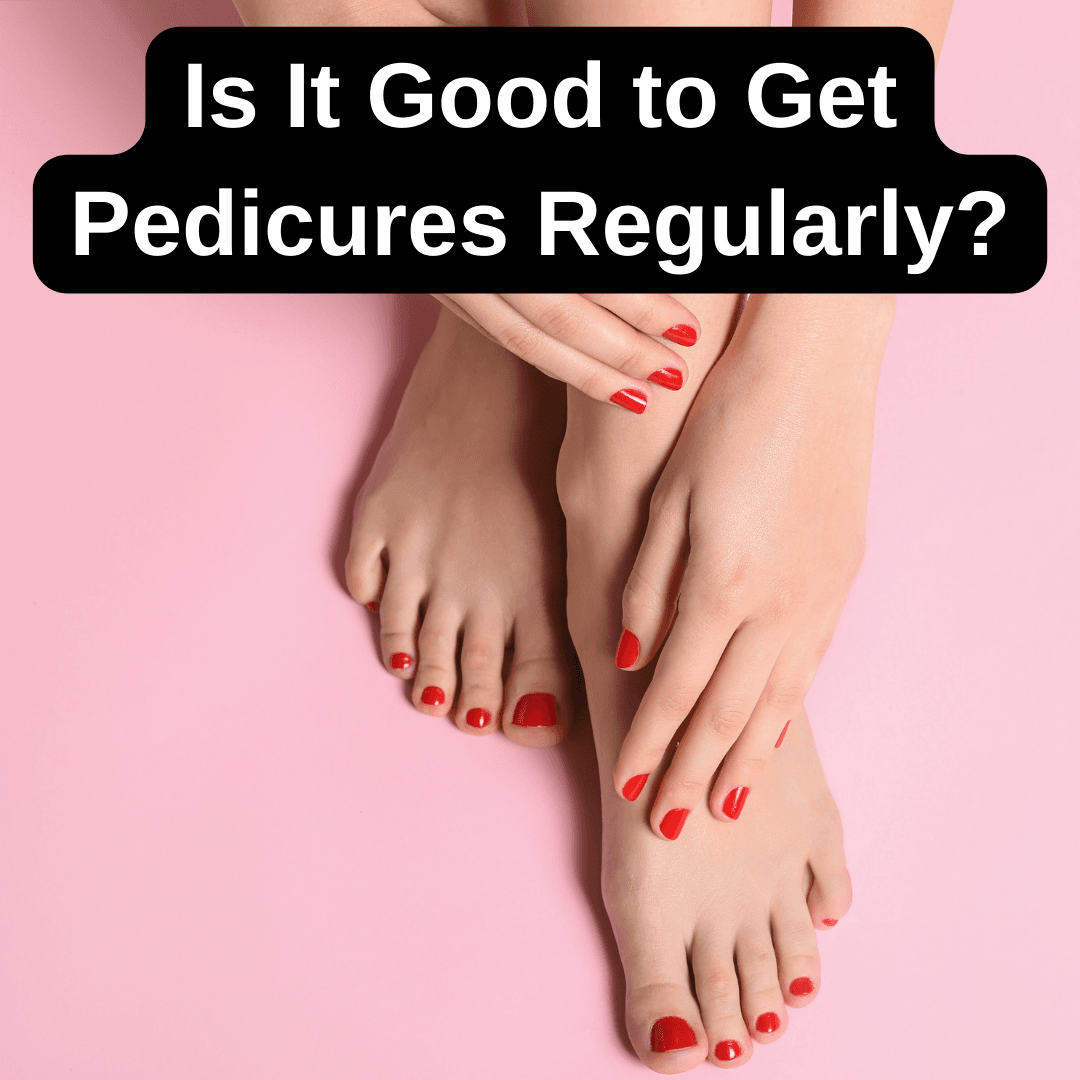
Just don’t overdo it—monthly pedicures with proper at-home care in between is ideal for most.
What are the downsides of BIAB?
While BIAB (Builder in a Bottle) is gentle compared to acrylics, potential downsides include:
- Allergic reactions (rare but possible)
- Nail thinning if removed improperly
- Cost: more expensive than basic polish
- Not suitable for extremely damaged nails without prior treatment
Overall, it’s one of the healthiest enhancements when applied and removed correctly.
Why do they punch your legs during a pedicure?
The tapping or slapping motion is part of a massage technique called percussion massage. It:
- Stimulates blood flow
- Relaxes tight leg muscles
- Helps lymphatic drainage
If it feels too strong or uncomfortable, just let your technician know—pressure can be adjusted.
What activities to avoid after pedicure?
To keep your pedicure intact and avoid complications, avoid:
- Wearing tight shoes (may smudge polish or irritate skin)
- Hot water exposure (baths, saunas) for at least 12–24 hours
- Exercising immediately (sweat + pressure can harm your pedi)
- Sunbathing or pool dips (chlorine weakens polish)
Let your skin and nails settle before exposing them to harsh conditions.
How long should I wait to shower after a pedicure?
Wait at least 8 to 12 hours after a pedicure before showering to:
- Allow polish to fully cure
- Prevent bubbling or smudging
- Let moisturizers or oils absorb into skin
If your pedicure was gel-based, curing is faster, and a shower after 1–2 hours may be safe. Always dry your feet properly afterward.
How do I keep my feet smooth after a pedicure?
To maintain smooth feet:
- Moisturize nightly with thick foot cream
- Wear socks to bed (locks in hydration)
- Use a pumice stone 1–2 times per week
- Apply cuticle oil regularly
- Avoid walking barefoot on hard surfaces
Choose a foot cream with urea—it deeply hydrates thick skin and prevents cracks.
Conclusion – Beautiful Feet Start With Consistency
Pedicures aren’t just a luxury—they’re maintenance for your feet. Whether you go every 2 weeks or once a month, what matters most is consistency, hygiene, and listening to your feet’s needs. With the right care and timing, you’ll not only enjoy beautiful toes, but also healthier, pain-free feet all year round.
Looking for more expert-backed beauty tips beyond pedicures? From laser hair removal to at-home grooming guides, EpilationWorld has everything you need to upgrade your routine.
In short, remember this:
- Schedule smartly: Every 3–4 weeks is ideal for most people, unless you have active lifestyles or special needs like cracked heels.
- Care doesn’t end at the salon: Daily moisturizing, weekly exfoliation, and protective habits at home are just as essential as the pedicure itself.
- Don’t ignore warning signs: Cracked heels, toenail pain, or dry cuticles are your feet’s way of saying it’s time for attention—don’t wait too long.
Disclaimer
This content is for informational purposes only and does not substitute professional medical advice. Always consult a licensed podiatrist or dermatologist before beginning any foot care treatment.

Board-Certified Aesthetic Specialist & Certified Laser Technician
She is a board-certified aesthetic specialist with 14+ years of experience in laser hair removal, skincare, and full-spectrum beauty services. Holding academic training in beauty sciences and advanced certifications, she blends medical-grade knowledge with personalized care. At Epilation World, her mission is to empower readers with clear, ethical, and research-backed insights that support confident personal care decisions.

